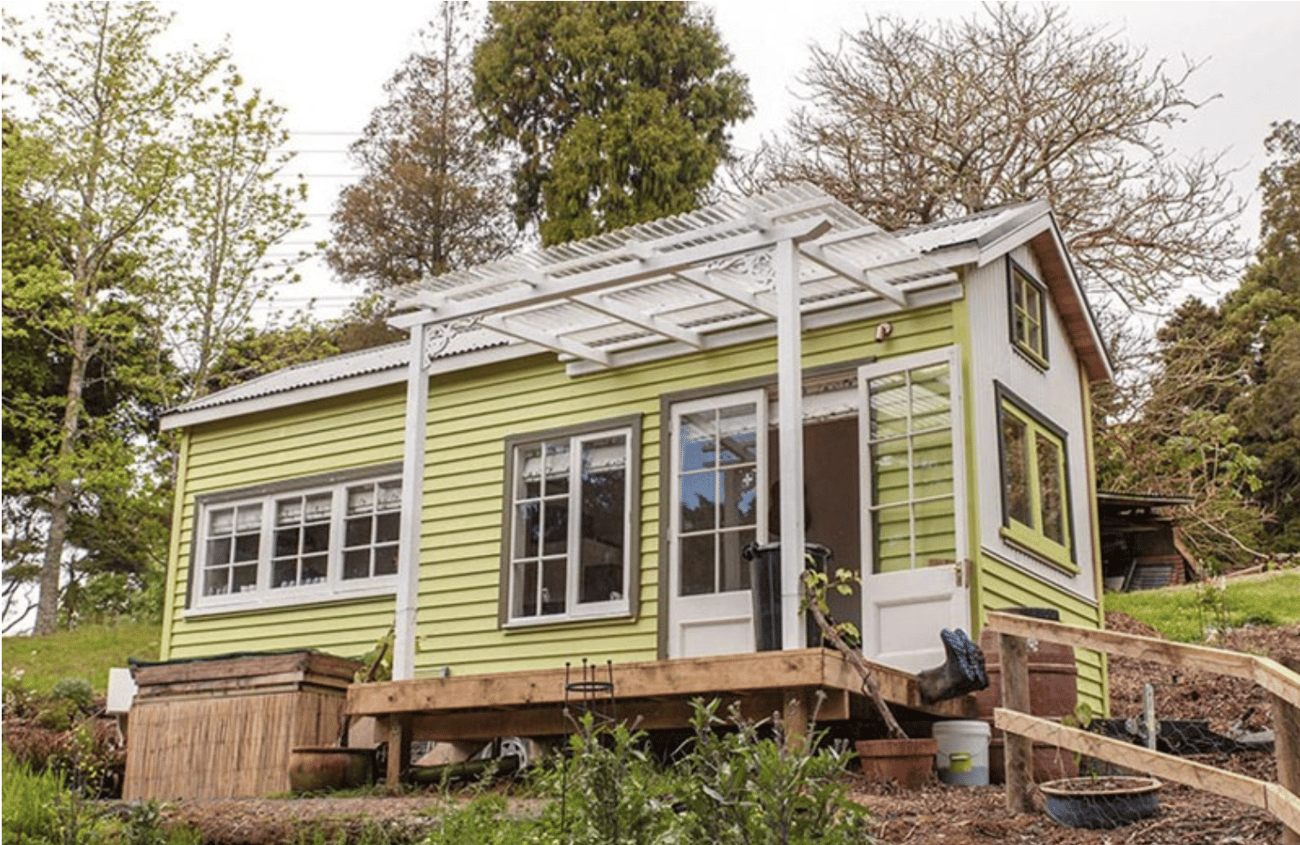‘Freedom is at the core of the movement’: Sheryl Burson explains the benefits of tiny homes

There is no set definition of a ‘tiny house’; however, a residential structure under 35 square metres is generally considered a tiny house. Some people find the idea of downsizing or living in such a small place too unrealistic but embrace the concept of a much smaller home. Why is this movement gaining such traction in New Zealand?

Who lives in a tiny house?
Many tiny homes are built by homeowners spurred on by the numerous tv shows, blogs and websites with huge followings that show and idealise the lifestyle. Many homes are built onto trailers to help with mobility and, depending on where you live, in an attempt to cut down on building and resource consent costs.
The idea of freedom is at the core of the movement: freedom from massive mortgages and the ability to use the spare cash to save for adventures and experiences; freedom to live a more eco-friendly and minimalist lifestyle that such a small space necessitates; and freedom to have a holiday home when traditional Kiwi family bachs are out of reach for many.
‘Live a bigger life, instead of having a bigger house’ is a saying often heard on the Tiny House circuit. It’s an idea with an immense appeal to millennials, who struggle with the thought of ever affording their own home, and others who may have hit financial difficulties either through job loss or a relationship breakdown.

Shaye Boddington is a Tiny House builder based in West Auckland. Ray White interviews her to find out more about this growing trend.
What does the Tiny House movement mean to you, and how did you get involved?
I got involved in the Tiny House movement 6 years ago when I built my first tiny house “Lucy” as a way to get into my own home without drowning myself in debt. I also like things to be top quality, and so in my mind, I’d rather have my home small and perfect than large and low quality. On top of eliminating mortgage debt, I also see the Tiny House movement as a way to own your own home while still keeping a flexible lifestyle… I don’t know where I want to live in 5 years – but because of the Tiny House movement, I can still own my own home and have the flexibility to move it as and when my life changes.

What do you think is the most significant reason/reasons people are interested in building or owning a Tiny House?
The Tiny House movement attracts all types of people. I build homes for a lot of young couples, young professionals, single mums, elderly people, small families, singles…. and more! It appeals to so many people for a few main reasons: I think as human beings, we have an innate desire to create a home of our own. The Tiny House movement enables people to do this, although, in an alternative way, they create a beautiful space that is their home. It allows people to escape the rent trap and enter into a life of more freedom and flexibility. I often hear inspiring stories from my clients of downsizing their home so that they can enter into careers they love without pressures to pay massive weekly rents. Tiny House living is not for everybody – but for many people, it is a way of creating a life with less stuff – but more purpose and meaning.

What do you think the future holds for the Tiny House movement in New Zealand?
As Kiwis, I feel we naturally think outside the box a little more than most, which has seen a massive interest in the Tiny House movement. I personally find it exciting to see so many people embracing this lifestyle because when we create more financial freedom in our lives, we are in a better position to make a positive change in our communities. I see an exciting future for the Tiny House movement in New Zealand with the recent creation of the NZ Tiny House Association and with independent teams around the country exploring the ideas of Tiny House communities. I can’t wait to see more and more Kiwis embracing this lifestyle!
It is hard to say where the future of tiny homes will go as a primary residence, but the movement indeed has a growing following, and a simpler life using the world’s resources in a more considered way is an ideal we should all embrace.
To find out more about Shaye’s work visit her website here.
This article was originally published on the Ray White website.


